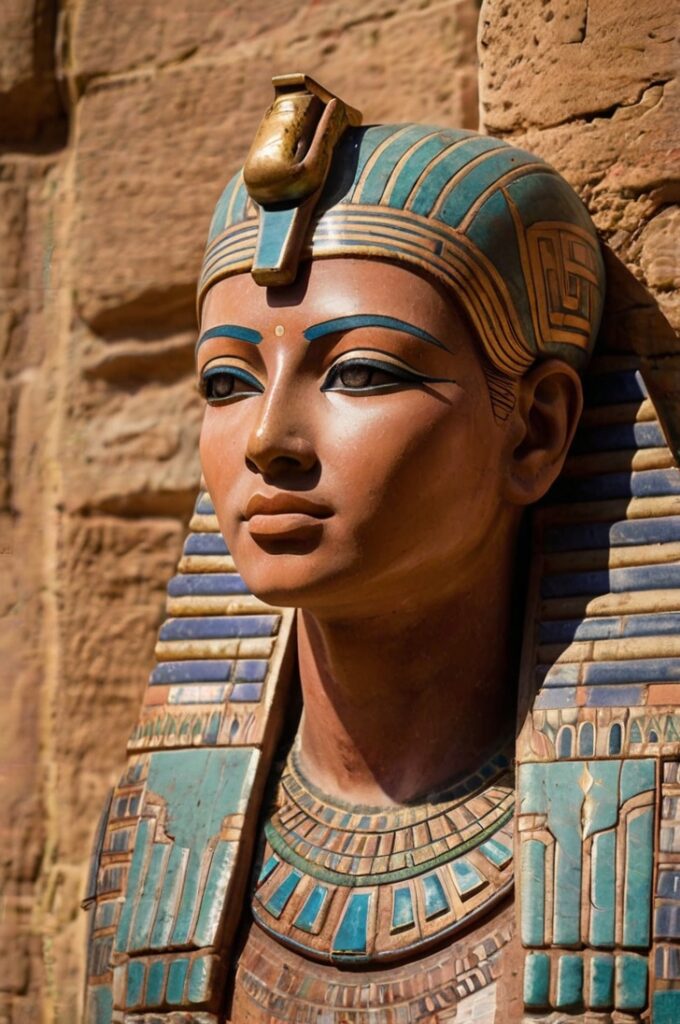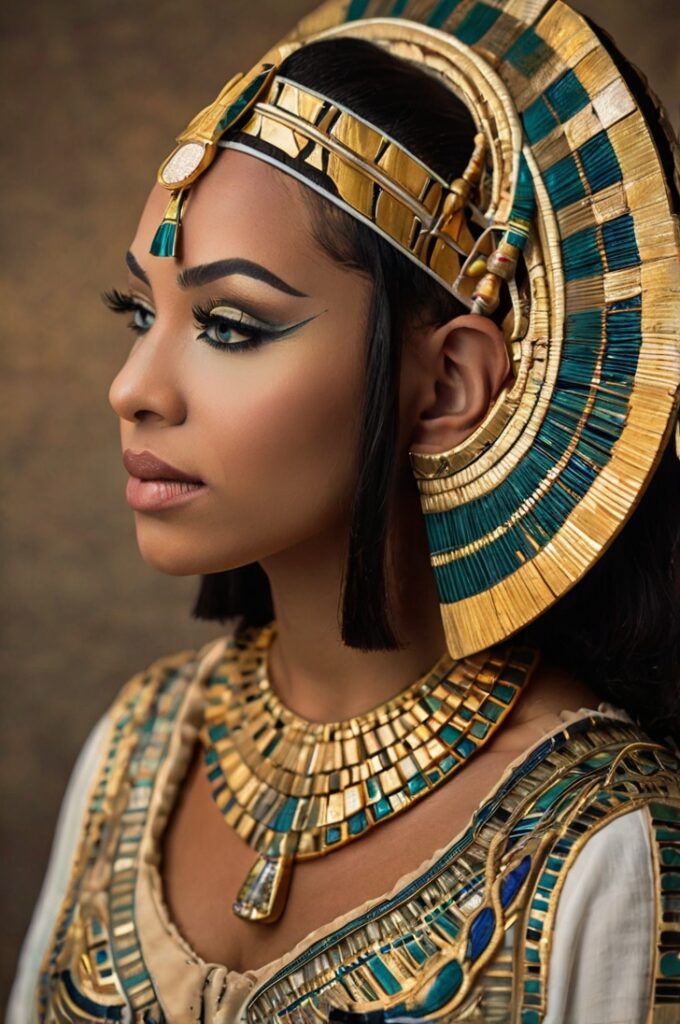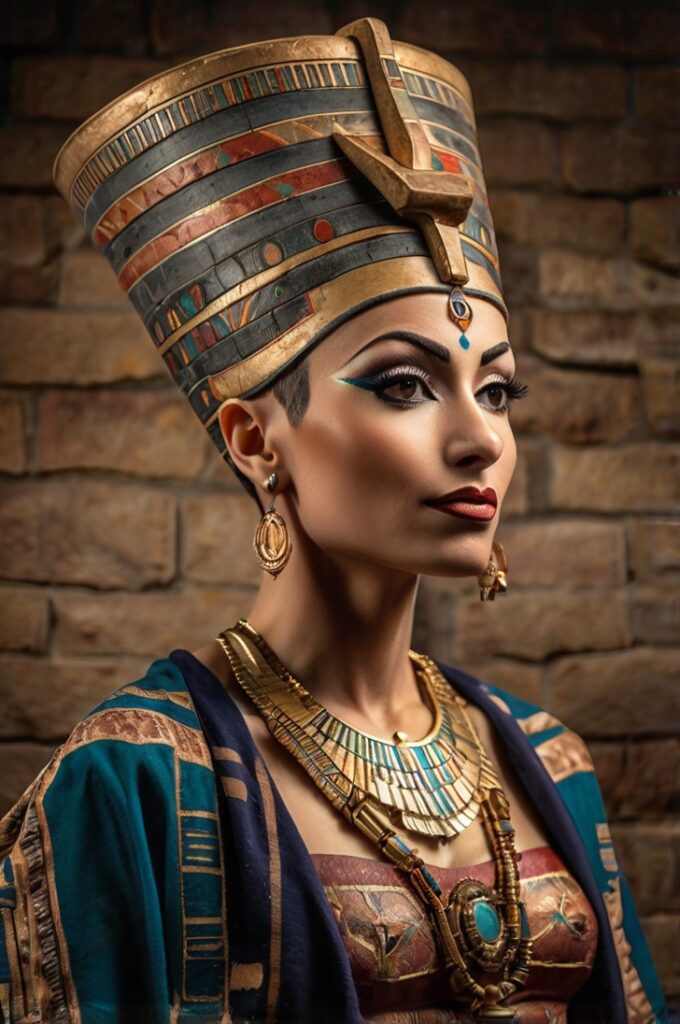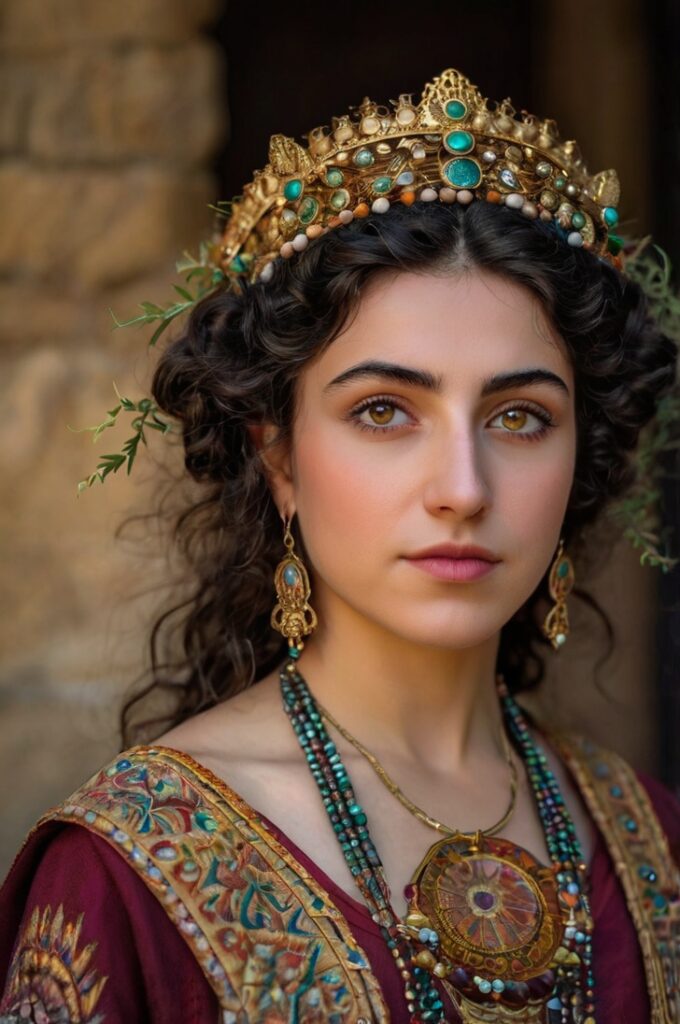
Ancient civilizations were often dominated by powerful men, but there were many women who played significant roles in shaping the course of history.
These women were not just passive figures, but active agents who wielded power, influence, and authority.
In this article, we’ll explore some of the most powerful women in ancient civilizations, highlighting their achievements and contributions to their respective societies.
Ruling Queens and Pharaohs
Hatshepsut (Egypt)

Hatshepsut was a remarkable figure in ancient Egypt, serving as one of the few female pharaohs.
Her reign, lasting over 20 years during the 18th Dynasty, was a period of immense prosperity and cultural achievement.
Notably, Hatshepsut embarked on extensive architectural projects, including her magnificent mortuary temple at Deir el-Bahari, which remains an iconic example of ancient Egyptian art and architecture.
Her military campaigns were equally significant, helping to secure and expand Egypt’s borders.
Additionally, Hatshepsut initiated successful trade expeditions, such as the famous journey to the Land of Punt, which brought back exotic goods and bolstered Egypt’s economy.
Her leadership not only solidified Egypt’s power but also left a lasting legacy of innovation and stability.
Boudica (Britain)
Boudica was a fierce and determined leader of the Iceni tribe in Britain.
Around 60 or 61 AD, she led a major uprising against the occupying Roman forces, motivated by the harsh treatment of her people and personal grievances.
Boudica’s rebellion saw her and her forces destroy several key Roman settlements, including Camulodunum (modern Colchester), Londinium (London), and Verulamium (St. Albans).
Despite her eventual defeat, Boudica’s courage and leadership have immortalized her as a symbol of resistance against oppression, celebrated for her unwavering spirit and determination in the face of adversity.
Semiramis (Assyria)
Semiramis, a legendary queen of Assyria, is often celebrated for her extraordinary achievements in both military and architectural domains.
Although her story blends history with myth, she is credited with vast building projects, such as the construction of Babylon and the Hanging Gardens, one of the Seven Wonders of the Ancient World.
Semiramis is also reputed to have led successful military campaigns that expanded Assyrian territory significantly.
Her legend speaks to her exceptional capabilities and the awe-inspiring impact she had on her kingdom, making her one of the most storied figures in ancient Assyrian history.
Cleopatra VII (Egypt)

Cleopatra VII was the last active ruler of the Ptolemaic Kingdom of Egypt and is renowned for her intelligence, political acumen, and strategic alliances.
Her relationships with powerful Roman figures, Julius Caesar and Mark Antony, were pivotal in her efforts to maintain Egypt’s independence amid the growing power of Rome.
Cleopatra’s reign from 51 to 30 BC was marked by her astute diplomacy and bold leadership, striving to keep Egypt prosperous and autonomous.
Her eventual defeat by Octavian (later Augustus) and subsequent tragic death marked the end of pharaonic rule in Egypt, transitioning the kingdom into a Roman province.
Cleopatra’s legacy endures as a testament to her remarkable ability to navigate and influence the complex political landscape of her time.
Livia Drusilla (Rome)
Livia Drusilla, the wife of Roman Emperor Augustus, was a formidable political figure in ancient Rome.
Her marriage to Augustus lasted over five decades, during which she wielded significant influence.
Livia played a crucial role in shaping Roman politics, particularly in succession planning and policy-making.
Known for her wisdom and political savvy, she managed to navigate the intricacies of the Roman court effectively.
After Augustus’ death, her influence continued, and she was deified by her son Tiberius, reflecting her enduring impact on Roman society and governance.
Livia’s legacy is a powerful reminder of the substantial role she played in the early Roman Empire’s political sphere.
Women Who Shaped Empires
Nefertiti (Egypt)

Nefertiti was more than just the chief wife of Pharaoh Akhenaten; she was a formidable co-ruler in ancient Egypt around the 14th century BC.
Together with Akhenaten, she played a key role in the religious transformation that shifted Egypt’s worship from a pantheon of gods to the singular focus on Aten, the sun disk.
This shift was radical and met with resistance, but Nefertiti’s influence helped sustain it.
Her power extended beyond religious reforms; she was depicted in numerous artworks participating in state and religious ceremonies, signifying her importance.
The iconic bust of Nefertiti, discovered in 1912, remains a symbol of her beauty and power, embodying her legacy in both Egyptian art and history.
Agrippina the Younger (Rome)
Agrippina the Younger, born in 15 AD, was a master of political strategy in ancient Rome.
As the mother of Emperor Nero, she played a pivotal role in his rise to power.
Agrippina was not only the sister of Emperor Caligula and the wife of Emperor Claudius but also a powerful figure in her own right.
Her marriage to Claudius was a strategic move, and her subsequent actions, including the alleged poisoning of Claudius, were aimed at securing Nero’s position as emperor.
Known for her intelligence and political acumen, Agrippina’s influence extended well into Nero’s reign until their relationship soured, leading to her assassination.
Her story is a testament to her unyielding ambition and political skill.
Enheduanna (Sumer)
Enheduanna, living around 2285-2250 BC, holds the distinction of being the world’s first named author.
As a high priestess of the moon god Nanna and daughter of Sargon of Akkad, she penned numerous hymns and poems that have survived millennia.
Her most famous work, the “Exaltation of Inanna,” reveals not only her devout faith but also her literary talent and deep personal insights.
Enheduanna’s writings are crucial historical documents, shedding light on the religious practices and political dynamics of her time.
Her legacy underscores the significant contributions of women in early literary traditions and religious leadership.
Artemisia I of Caria (Anatolia)

Artemisia I of Caria, ruling in the early 5th century BC, was a queen and naval commander who allied with Persian King Xerxes I during the Greco-Persian Wars.
She is best known for her role in the Battle of Salamis in 480 BC, where her tactical brilliance and fearless leadership earned her respect and admiration from Xerxes.
Artemisia commanded her ships with exceptional skill, often outmaneuvering Greek forces despite being outnumbered.
Her strategic acumen in naval warfare and her ability to lead with authority and effectiveness make her one of history’s notable military figures.
Conclusion
These powerful women in ancient civilizations show that women have always played significant roles in shaping the course of history.
From ruling queens and pharaohs to women who shaped empires, these individuals demonstrate that women have the capacity to wield power, influence, and authority.



